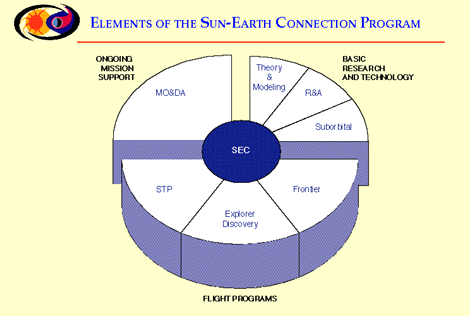 As evidenced by the nature and range of the scientific objectives set forth in the Sun-Earth Connection Roadmap, a single mission will typically contribute to more than one Campaign or even to more than one Quest (see the mission/campaign matrix). A carefully designed and deliberate approach to missions is required to accomplish the scientific objectives of the Sun-Earth Connection program with the greatest efficiency, cost-effectiveness, and scientific yield. This goal can be achieved with an annual expenditure of $300 M for a well-considered mix of Solar-Terrestrial Probes ($120 M in FY97 dollars) and Frontier Probes as well as through other components of the ongoing Sun-Earth Connection program, including the suborbital program, theory/modeling programs, and participation in the Explorer and Discovery programs. |




